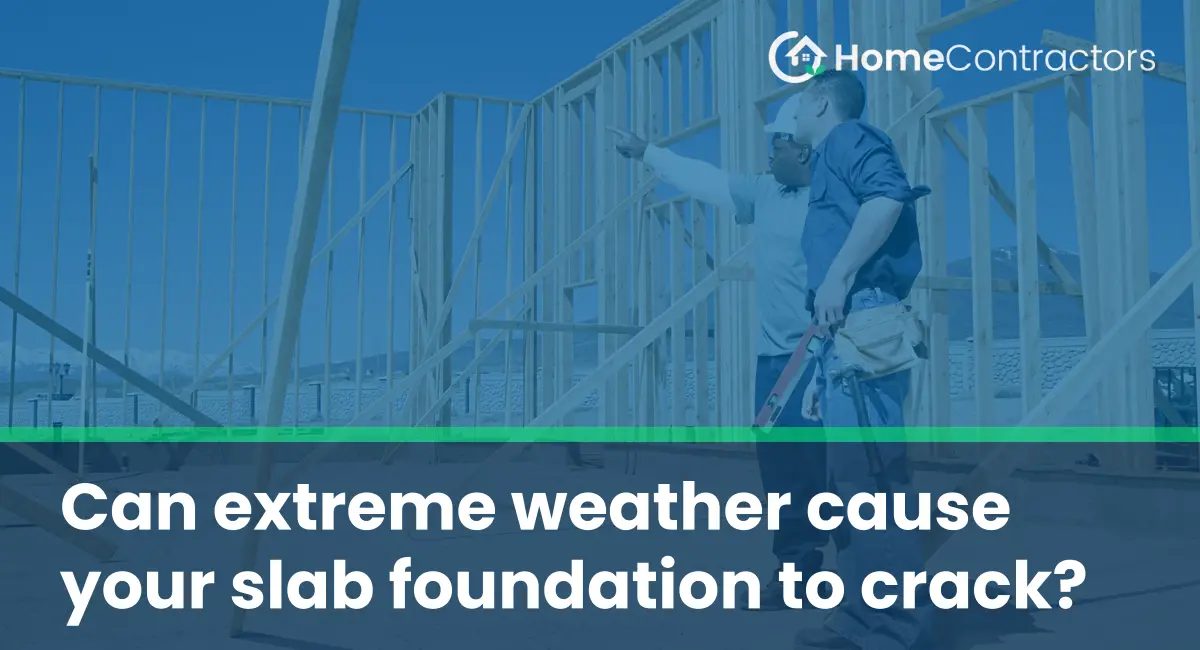Introduction: Understanding the Vulnerability of Slab Foundations to Extreme Weather Conditions
A slab foundation, as the name suggests, is a type of foundation that consists of a solid concrete slab that is laid directly on the ground. This form of foundation is popular in areas with stable soil conditions, as it is less susceptible to movements caused by expansive clay soils or frost heaving. However, even with its stability, extreme weather conditions can potentially cause cracks in a slab foundation. In this article, we will explore the impact of extreme weather on slab foundations and provide some preventive measures to mitigate potential damages.
The Effect of Drought and Excessive Moisture on Slab Foundations
a. Drought: A Potential Threat to Slab Foundations
During prolonged periods of drought, the soil underneath a slab foundation can experience significant drying and shrinkage. As the moisture content diminishes, the soil contracts, resulting in voids and gaps beneath the foundation. Over time, the lack of support beneath the slab can lead to cracks and structural damage.
b. Excessive Moisture: Another Culprit
On the other end of the spectrum, excessive moisture can also wreak havoc on slab foundations. Heavy rain or flooding can saturate the soil, causing it to expand. When the soil beneath the foundation swells, the upward pressure can exert considerable force and lead to cracking or heaving of the slab.
Freezing Temperatures and Slab Foundation Cracks
a. Frost Heaving: A Potential Consequence
In regions with freezing temperatures, freeze-thaw cycles can pose a significant threat to a slab foundation. When moisture infiltrates the soil beneath the foundation, it freezes during colder periods, causing the soil to expand and push against the concrete slab. This phenomenon, known as frost heaving, can create pressure that ultimately results in cracking or uplift of the foundation.
Preventive Measures to Protect Slab Foundations from Extreme Weather
a. Ensure Proper Drainage
To safeguard your slab foundation from excessive moisture, it is vital to ensure proper drainage around your property. Regularly inspect and maintain gutters, downspouts, and grading to direct rainwater away from the foundation. Installing French drains or a sump pump system can also help alleviate any unwanted water accumulation.
b. Maintain Soil Moisture Levels
During dry spells, it is crucial to monitor and maintain adequate soil moisture levels around your foundation. Consistently watering the soil near the foundation can help prevent excessive drying and minimize soil shrinkage. However, be cautious not to oversaturate the soil, as excess moisture may also cause problems.
Implement Insulation and Ventilation
In regions prone to freezing temperatures, insulation and ventilation can play a vital role in protecting your slab foundation. Adequate insulation barriers beneath the slab can help reduce the transfer of extreme cold temperatures to the soil, minimizing frost heaving risks. Additionally, proper ventilation in crawl spaces or basements can help regulate moisture levels and prevent soil expansion and contraction.
Conclusion: Understanding the Risks and Taking Preventive Action
While slab foundations are generally considered stable, extreme weather conditions can pose significant risks. Drought, excessive moisture, and freezing temperatures can all lead to cracks and damage to your slab foundation. By understanding these risks and implementing preventive measures such as drainage maintenance, soil moisture management, and insulation, homeowners can mitigate potential damages and ensure the long-term stability of their foundations. Regular inspection and consultation with foundation professionals are also advisable to address any emerging issues promptly.
